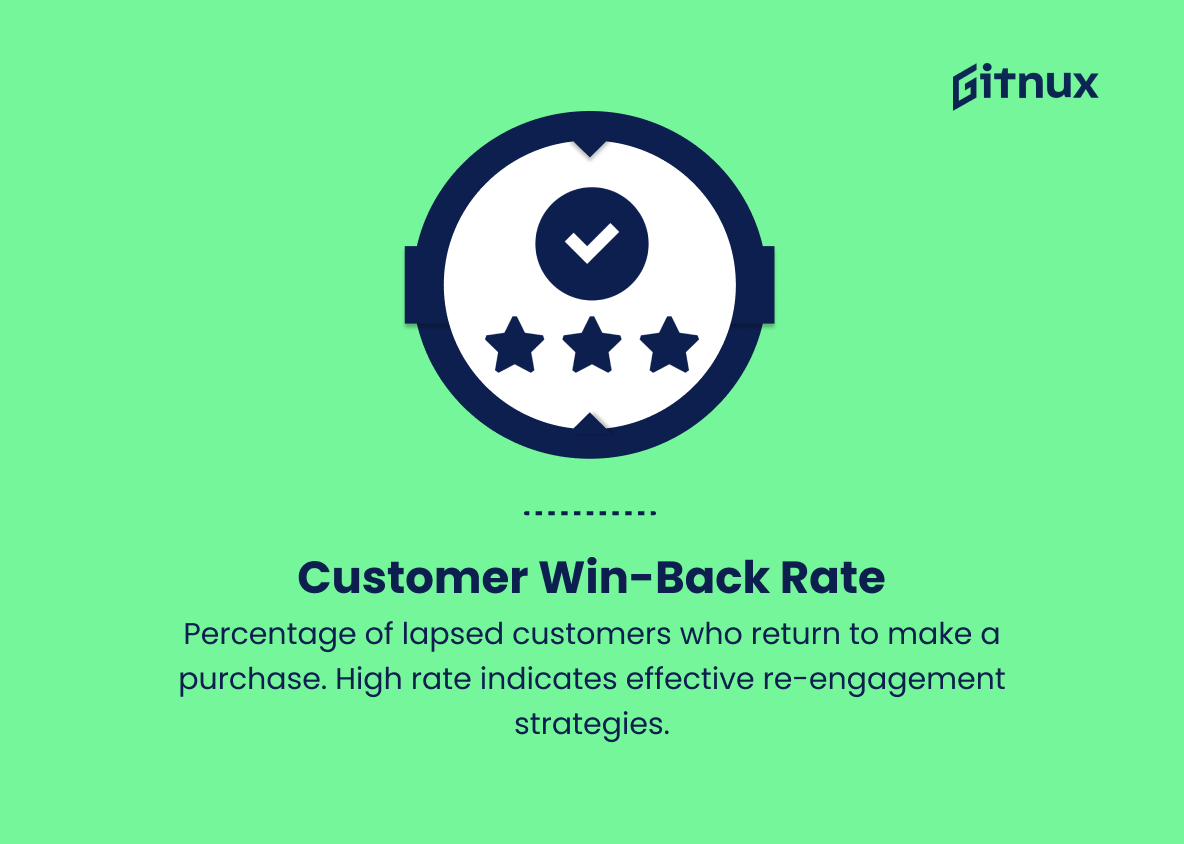Understanding customer retention and engagement is crucial for eCommerce sustainability and growth. Beyond product sales and website traffic, businesses need to rely on key retention metrics to determine marketing effectiveness, satisfaction, and viability. This blog post will delve into these metrics, their importance, measurement, and how they can improve online businesses. Discover data-driven insights to unlock eCommerce potential.
Ecommerce Retention Metrics You Should Know
1. Customer Retention Rate (CRR)
This metric reflects the percentage of customers who continue to make repeat purchases over a given period of time. It’s essential to track CRR to understand and improve your customer loyalty and satisfaction.
2. Churn Rate
Churn rate indicates the percentage of customers who stop buying or engaging with your business during a specific period. A high churn rate could signal dissatisfaction with your products or services.
3. Average Order Value (AOV)
This metric measures the average amount spent by customers per transaction. An increase in AOV over time could indicate better customer satisfaction and a successful upselling or cross-selling strategy.
4. Repeat Purchase Rate (RPR)
This metric indicates the percentage of customers who make more than one purchase from your store. A high RPR signifies a loyal customer base.
5. Customer Lifetime Value (CLV)
CLV estimates the total revenue a customer will generate for your business over the entirety of their relationship with you. This metric helps gauge the long-term profitability of retaining customers.
6. Purchase Frequency (PF)
PF measures how often customers buy from your store within a specific time frame. High purchase frequency indicates high customer satisfaction and the effectiveness of your promotional strategies.
7. Time Between Purchases (TBP)
This metric calculates the average time it takes for a customer to make a repeat purchase. A shorter TBP indicates higher customer satisfaction, while longer periods may signal issues with the customer experience.
8. Customer Satisfaction Score (CSAT)
CSAT measures how satisfied customers are with your products or services. This metric is typically gathered through customer surveys and can help identify areas needing improvement.
9. Net Promoter Score (NPS)
NPS gauges the willingness of customers to recommend your store to others. A high NPS reflects loyal customers and positive word-of-mouth marketing.
10. First-time versus Returning Customers
This metric compares the percentage of new customers to returning customers. A high percentage of returning customers implies better customer retention and loyalty.
11. Customer Win-back Rate
This metric shows the percentage of lapsed customers who return to your store and make a purchase. A high win-back rate indicates effective re-engagement strategies.
12. Customer Recovery Rate
This metric measures the percentage of customers who provide negative feedback or have a bad experience but continue to purchase from your store. It’s essential for understanding the effectiveness of your customer service and complaint resolution processes.
13. Cart Abandonment Rate
This metric indicates the percentage of customers who add items to their cart but don’t complete the purchase. A high cart abandonment rate may suggest issues with the checkout process or a need for retargeting efforts.
By tracking these ecommerce retention metrics, businesses can gain a better understanding of their customer base, identify areas for improvement, and develop targeted strategies to enhance customer experience and loyalty.
Ecommerce Retention Metrics Explained
Ecommerce retention metrics are crucial for optimizing the shopping experience and understanding customer behavior. Metrics like CRR, AOV, RPR, CLV, CSAT, and NPS provide insights into loyalty, satisfaction, and purchasing habits. Monitoring these metrics helps businesses identify areas for improvement, gauge promotional strategy effectiveness, and develop targeted approaches for enhancing the customer experience. This leads to increased retention, brand loyalty, and long-term profitability for ecommerce businesses.
Conclusion
E-commerce retention metrics are crucial for long-term success. By tracking and understanding these indicators, businesses can identify areas for improvement, optimize the customer experience, and increase profitability. Prioritizing customer retention facilitates brand loyalty, recurring revenue, and competitiveness. E-commerce professionals should continuously monitor, assess, and refine retention efforts for staying ahead in the online commerce landscape.














